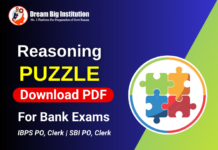
Table of Contents
Best 600 Indian Geography PDF MCQ For SSC |UPSC | IAS | NDA Etc.
Introduction
Among all the subjects that are included in the syllabus of the Civil services examination, Geography arguably has the largest syllabus. It also has great overlap with other topics. Hence, covering it becomes a challenge for the aspirant. In such a scenario, it is easy to go off at a tangent and study something that may not be required in the exam. Also, since nearly one-fifth of the paper has questions related to geography and the environment, the weightage of the subject is certainly high. The aspirant requires a coherent strategy to be able to cover all the topics. To do this, we have analyzed the subject in detail. Here is what we recommend that you do:
Decoding the Syllabus
The exam notification says :
Indian and World Geography-Physical, Social and Economic Geography of India and the World.
Thus the syllabus has two components:
- World Geography-Physical, Social and Economic
- Indian Geography-Physical, Social and Economic
Your study schedule should ideally have the above divisions. This will allow you to create a checklist to go through so that you can set your targets accordingly.
Now, you must learn to sub-categorize the syllabus. A good way is to follow the table of contents given in the NCERTs. The World Geography syllabus is given below:
Download Best 600 Indian Geography PDF MCQ For SSC |UPSC | IAS | NDA | CDS Etc.
World Geography
Physical Geography
Geomorphology
- Earth in the Solar system
- Latitude, Longitude and Time Zones
- Structure of the Interior of the Earth
- Continental Drift
- Plate Tectonics – Plates
- Pacific Rim of Fire
- Volcanic and Earthquake belts of the World
- Landforms – Mountains (Block and Fold)
- Landforms – Plateaus
- Landforms – Plains
- Major Drainage basins
Oceanography
- Features of ocean bottom reliefs
- Oceans, inland lakes, and seas
- Temperature and salinity of water bodies
- Ocean currents of the Atlantic Ocean
- Ocean currents of the Pacific Ocean
- Ocean currents of the Indian Ocean (Winter and Summer)
- Ocean bottom resources – Polymetallic nodules, Ferromanganese crusts
- Tides and related effects
- Coral reefs
- Marine Pollution
Climatology
- Structure of the atmosphere
- Heat budget
- Meridional circulation
- Planetary and Local winds
- Rainfall types
- Fronts and temperate cyclones
- Tropical cyclones
- El Nino, La Nina, Walker circulation, Southern oscillation
- Climatic regions of the world
Since Environment and biodiversity are separate topics in the syllabus parts of Environmental geography and Biogeography are best covered under those sub-headings. This will allow you to cover current affairs in detail as well.
Social geography
Under World geography, social geography is rarely covered. It is thus advised that you prepare current affairs related topics on:
- Demographic changes
- Population distribution and future trends
- Migration – voluntary and forced (including refugee issues)
- Annual publications of UN Population Fund
- Review of SDG progress
Economic Geography
- Food resource distribution (can be interlinked with climatic regions under Physical geography)
- Non-energy mineral resource distribution
- Energy resource distribution (coal, uranium, thorium, wind, solar, tidal and geothermal)
- Location of major ports, trading centers, financial centers and other places of economic significance in current affairs
This covers the syllabus sub-categorization for world geography. Similarly, a break up of the Indian geography syllabus can be done. A good way is to use the table of contents of the NCERTs which ideally divide the syllabus along logical lines. Here is how we divide the Indian geography syllabus:
- Physiographic divisions of India
- Drainage systems
- The climate of India (including climatic regions)
- Vegetation
- Soils
- Disasters and Geophysical phenomena like Earthquakes and Tsunamis
- Population: distribution, demographics, major tribal groups (focus on current affairs)
- Agricultural resources – food crops, non-food crops, cattle, and other biological resources
- Mineral resources of India (with mapping)
- Energy resources of India (with maps)
- Major Industries and industrial regions
- Transport: Road, rail, air, water (major routes and projects)
How to approach the preparation after understanding the syllabus?
1. NCERT Reading
Start with the basic books i.e. NCERTs. It is advised that students begin with the Geography NCERTs to get a good grasp of the basic concepts. It is only when you have read these books can you move on to the more advanced standard books. After the NCERTs it is recommended that you move on to Certificate Physical and Human Geography by G.C. Leong for the physical geography of the world. A complete book list is given at the end of the post. It is highly advised that you do not directly jump to advanced books, especially the ones that students of Geography optional use.
2. Decide how to prioritize your preparation
It is best advised that you prepare World geography before you target Indian geography. This will allow you to get a grasp on the essentials of geography before you target Indian geography. A good understanding of physical geography reduces the time required to understand concepts under Indian geography. You will see topics like El Nino, tropical cyclones etc. recur in under India.
3. Make your own notes
There is no better way to succeed than to understand and reproduce what you have learned in your own words. Making your own notes also helps you filter out the excess material that is often included in books and may not be required for your preparation.
4. Practice enough mock papers
This is very crucial for geography. In recent years UPSC has thrown a mix of factual and conceptual based questions. There is no specific trend. The only way to stay in the running is to have done rigorous practice. So practice and learn from your mistakes. You can search this section for Test series. For daily practice, you can follow the current affairs quiz.
5. Always have an atlas at hand while studying Geography
Geography is a map-based subject. To be able to understand it you must have a good knowledge of the map. In fact, in the 2017 civil services preliminary examination, there were several questions from maps, especially for India. Here is one of those questions:
If you travel by road from Kohima to Kottayam, what is the minimum number of States within India through which you can travel, including the origin and the destination?
(a) 6(b) 7(c) 8(d) 9
To answer the above question, one must be very thorough with the political map of India. Firstly, one must know where Kohima and Kottayam are located. Secondly, one must be familiar with the boundaries of the states to be able to figure out the best route to satisfy the question. The answer to the above question is 7. These are the possible routes:
- Nagaland (Kohima) – Assam – West Bengal – Odisha – Andhra Pradesh – Tamil Nadu – Kerala (Kottayam)
- Nagaland (Kohima) – Assam – West Bengal – Odisha – Andhra Pradesh – Karnataka – Kerala (Kottayam)
- Nagaland (Kohima) – Assam – West Bengal – Odisha – Telangana – Karnataka – Kerala (Kottayam)
Another question on maps from the 2017 paper is:
With reference to river Teesta, consider the following statements:
1. The source of river Teesta is the same as that of Brahmaputra but it flows through Sikkim.2. River Rangeet originates in Sikkim and it is a tributary of river Teesta.3. River Teesta flows into Bay of Bengal on the border of India and Bangladesh.
Which of the statements given above is/are correct?(a) 1 and 3 only(b) 2 only(c) 2 and 3 only(d) 1, 2 and 3
To solve this question too, one must know the course of the Teesta. This river has been in news for river-water sharing dispute. The answer is B. Every year a question from the world map is also expected directly, like the one from 2017 paper:
The Mediterranean Sea is at a border of which of the following countries?
1. Jordan2. Iraq3. Lebanon4. Syria
Select the correct answer using the code given below:(a) 1, 2 and 3 only(b) 2 and 3 only(c) 3 and 4 only(d) 1, 3 and 4 only
From the map the answer is clearly C. Thus, questions of several types require mapping knowledge. They may be on routes, borders and even pinpointing locations or a mixture of all these. There were six map based questions (excluding environment and biodiversity) in the 2017 prelims paper.
When preparing notes, make a separate section for important locations that have been in the news (especially international). A lot of the map based questions are on current affairs (like the Teesta river and Mediterranean sea question) so it is essential that you keep a track of these.











